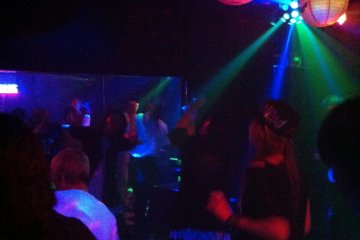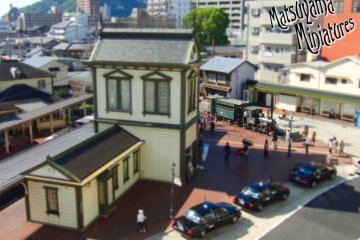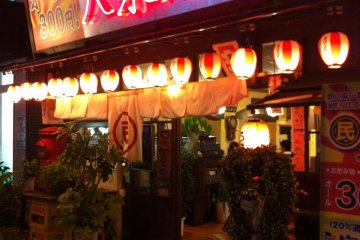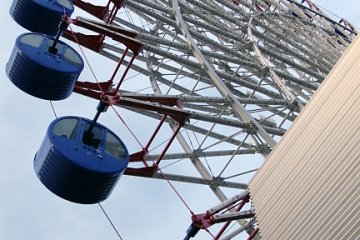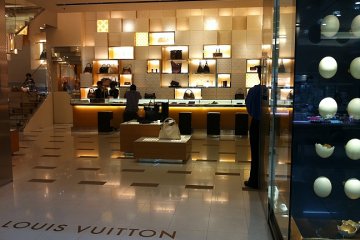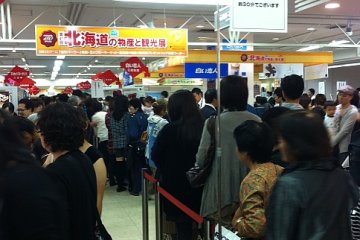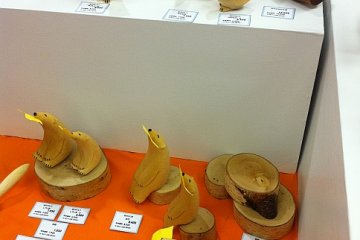There are two prestigious department stores in Matsuyama, Iyotetsu Takashimaya and Mitsukoshi, within easy walking distance of each other. Here we’ll have a look at Takashimaya.
The Iyotetsu Takashimaya building is actually the terminus for the Iyo Railway Co., (Iyotetsu), the first railway in Shikoku and also the third private railway in Japan. This follows the Japanese tradition of major railway lines that would build department stores at the terminus of the lines, so that they could literally feed warm bodies into the maw of Mammon from all directions with their steel conveyor belts.
Entering on the first floor, the visitor is greeted by amazing glamour and bling that extends for two floors. Dotted about like islands are stalls of Japanese and foreign makeup manufacturers, staffed by good-looking women, exotically suited and made up. To the sides are rooms devoted to Gucci, Louis Vuitton and other prestige brands, with sophisticated displays that change regularly. Being male, this feels like alien territory, and I make haste for the escalator.
As a rule, the higher you go in Takashimaya, the lower the prices become. On the apparel floors, there are high-quality brand labels, with pricing to match. Each ‘department’ or shop is manned by one or more staff who will greet you as you pass by, and if you enter and handle some merchandise, will bustle up and register intense willingness to be of service, albeit in Japanese. If you make a purchase, you can expect the rituals of payment and packaging to take up a good deal of time and involve sundry courtesies of a sort that you won’t encounter in other types of store. Kimonos are a traditional mainstay of Japanese department stores, and foreign visitors may find the displays of kimonos particularly interesting.
On the upper floors, the merchandise is more utilitarian, with furniture, tableware, interior decorations, stationery and toys. There are also bookstores and music and media shops. The very top floors are devoted to affordable restaurants and rooftop cafés. There are also occasional fairs, featuring produce for example from Hokkaido or Shanghai, that draw long lines of visitors.
One unusual feature of Takashimaya is the large Ferris wheel on its roof. Known as Kururin, this wheel is a very visible landmark, especially at night when it’s illuminated in constantly changing patterns. Not surprisingly, the views from Kururin over Matsuyama and the distant mountains and sea are fantastic.
There’s something for everyone to enjoy at Takashimaya. While some of the prices may have a zero too many for cost-conscious shoppers, you can find reasonably-priced items and even some bargains. For a foreign visitor, it’s like visiting a museum, where you can buy the exhibits. A visit to a department store can make a good family outing, especially when the weather is inclement.
Incidentally, the wealthier segment of my acquaintance—the dentists and company presidents—tell me that Matsuyama’s department stores are also happy to bring their products to you in a van to look at, if they’re satisfied there’s a reasonable chance of making a sale. Somebody I know likes to have jewels arrayed before her at home, although she doesn’t always condescend to make a purchase lest the salespeople become too familiar.




